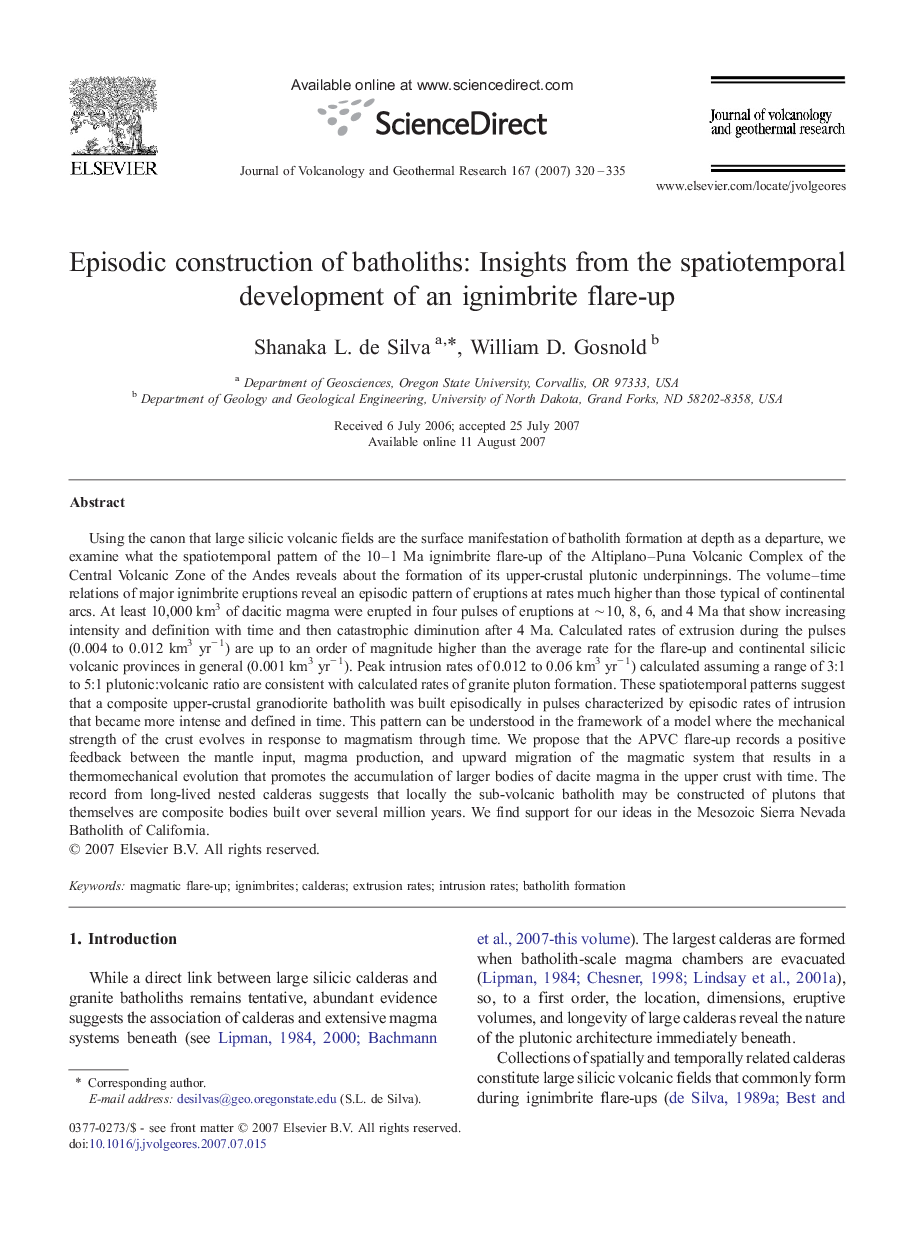| کد مقاله | کد نشریه | سال انتشار | مقاله انگلیسی | نسخه تمام متن |
|---|---|---|---|---|
| 4714870 | 1638458 | 2007 | 16 صفحه PDF | دانلود رایگان |

Using the canon that large silicic volcanic fields are the surface manifestation of batholith formation at depth as a departure, we examine what the spatiotemporal pattern of the 10–1 Ma ignimbrite flare-up of the Altiplano–Puna Volcanic Complex of the Central Volcanic Zone of the Andes reveals about the formation of its upper-crustal plutonic underpinnings. The volume–time relations of major ignimbrite eruptions reveal an episodic pattern of eruptions at rates much higher than those typical of continental arcs. At least 10,000 km3 of dacitic magma were erupted in four pulses of eruptions at ∼ 10, 8, 6, and 4 Ma that show increasing intensity and definition with time and then catastrophic diminution after 4 Ma. Calculated rates of extrusion during the pulses (0.004 to 0.012 km3 yr− 1) are up to an order of magnitude higher than the average rate for the flare-up and continental silicic volcanic provinces in general (0.001 km3 yr− 1). Peak intrusion rates of 0.012 to 0.06 km3 yr− 1) calculated assuming a range of 3:1 to 5:1 plutonic:volcanic ratio are consistent with calculated rates of granite pluton formation. These spatiotemporal patterns suggest that a composite upper-crustal granodiorite batholith was built episodically in pulses characterized by episodic rates of intrusion that became more intense and defined in time. This pattern can be understood in the framework of a model where the mechanical strength of the crust evolves in response to magmatism through time. We propose that the APVC flare-up records a positive feedback between the mantle input, magma production, and upward migration of the magmatic system that results in a thermomechanical evolution that promotes the accumulation of larger bodies of dacite magma in the upper crust with time. The record from long-lived nested calderas suggests that locally the sub-volcanic batholith may be constructed of plutons that themselves are composite bodies built over several million years. We find support for our ideas in the Mesozoic Sierra Nevada Batholith of California.
Journal: Journal of Volcanology and Geothermal Research - Volume 167, Issues 1–4, 1 November 2007, Pages 320–335